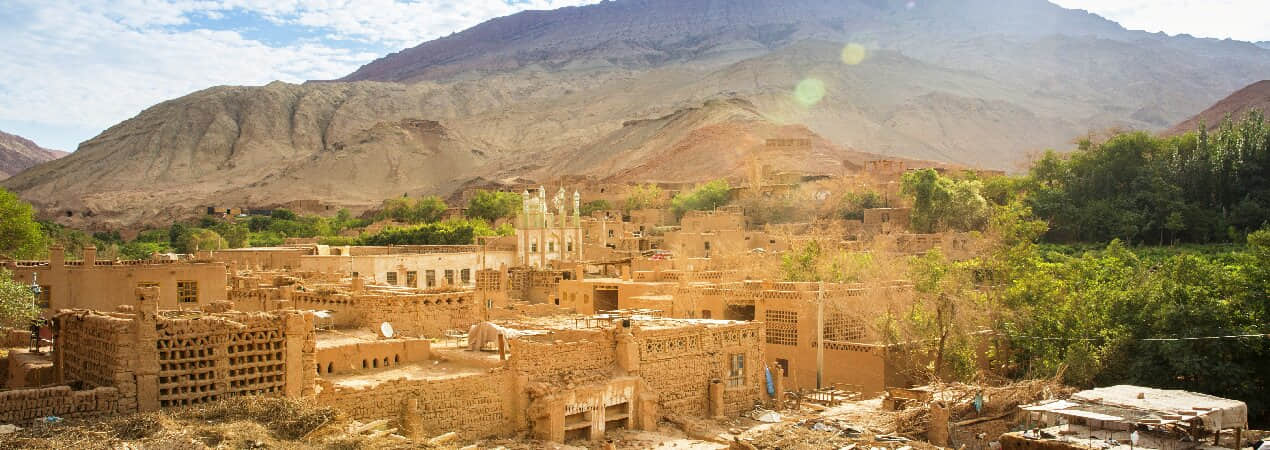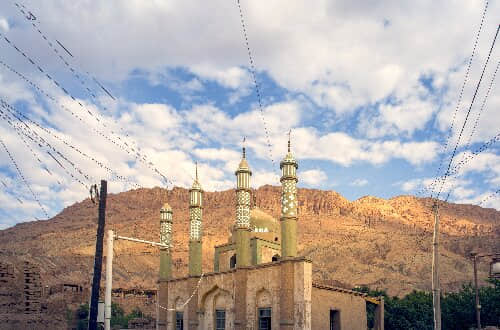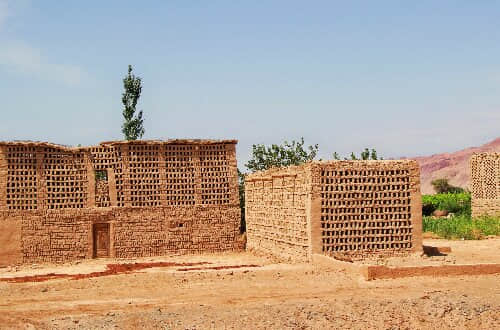Mazha Village

Tuyugou Mazha Village is a Uyghur village with a 2,600-year history in Xinjiang, preserving primitive traditional Uyghur clay architecture. Both its architectural and decorative styles are highly distinctive with ethnic features, making it a popular tourist attraction in Xinjiang.
- Chinese name: 麻扎村 Má Zhā Cūn
- Suggested time: 1-2 hours
- Ticket: 30 yuan per person
- Open hours: 10:00 - 18:00
- The best time to visit: Spring (March - May) and autumn (September - November)
- Address: Mazha Village, Tuyugou Township, Gaochang District, Turpan City, Xinjiang Uygur Autonomous Region, China
- How to get there: From Turpan city center, drive along Provincial Road 202 towards the southeast for about 40 kilometers.
- Surroundings: Flaming Mountains
Highlights of Mazha Village
The Great Mosque
 The Great Mosque
The Great MosqueBuilt in the 45th year of the Qianlong Reign of the Qing Dynasty (1780), covering an area of over 2,000 square meters, it can accommodate 2,000 people for worship simultaneously. As a typical ancient mosque, it integrates Islamic architectural art with traditional Uyghur architectural techniques. The structure consists of a minaret, a balcony for religious lectures, a prayer hall, a scripture hall, an imam's quarters, an ablution room and other auxiliary buildings.
Tuyugou Grand Canyon
 Tuyugou Grand Canyon
Tuyugou Grand CanyonThe canyon starts from Subeshi Village in the north (where the Subeshi Cultural Relic Site, one of the three major ancient cultural relics in Xinjiang, is located at the northern entrance of the grand canyon) and ends at Mazha Village in the south, with a total length of 8 kilometers and an average width of about 1 kilometer. The Grand Canyon is home to the highest peak of the Flaming Mountains, reaching an altitude of 831.7 meters. Running from north to south, the canyon vertically cuts through the Flaming Mountains, revealing clearly visible mountain rock formations with distinct colors, a breathtaking display of nature's extraordinary craftsmanship. Walking along the path, visitors can admire the magical and magnificent scenery of the canyon.
Tuyugou Grottoes
The Tuyugou Grottoes were excavated during the Two Jin and Sixteen Kingdoms period. They are the earliest and largest grotto temples excavated in the Gaochang Kingdom. There are 94 caves in total, 46 of which are numbered, and 10 caves retain murals and their traces. Many precious cultural relics were unearthed from the grottoes, including fragments of the Buddhist scripture "The Collection of Essentials of All Buddhas" from the sixth year of the Yuankang Reign in the Western Jin Dynasty (296). The murals are rich in content and diverse in subject matter, mainly depicting stories of the Buddha's life, Jataka tales (previous lives) and karma stories, with a unique painting style.
Earthen buildings
 Earthen buildings
Earthen buildingsThe ancestors of Maza Village used local materials and adapted to local conditions according to the local natural environment and survival needs. They made full and ingenious use of yellow clay to build houses, and adopted a variety of forms such as masonry, stacking, digging, arching, plastering and roofing. It is a well-preserved earthen building complex, which can be called "China's No. 1 Earthen Village". Most of the houses here are two-story yellow clay and earthen buildings with wood-and-earth structures. The upper floor is a bungalow, and the lower floor is a cave built by digging into the mountain. It is warm in winter and cool in summer.
Educational Value
The architecture of Mazha Village integrates multiple cultural elements. The harmonious coexistence of Han Dynasty architectural techniques and Persian arch structures in the village reflects the exchange and integration of different cultures in the field of architecture, holding important value for studying the spread and evolution of architectural culture.
Activities to do at Mazha Village
Experience Adlais silk tie-dyeing: Use natural plant dyes to make small silk scarves and understand the traditional wisdom of dye extraction and color matching.
Conduct on-site research: Students can combine theoretical knowledge with practice through activities such as measuring the thermal environment of buildings, drawing the water system map of Karez, and simulating rammed earth construction.
Drop us a line and we'll connect you with the top China expert in no time!